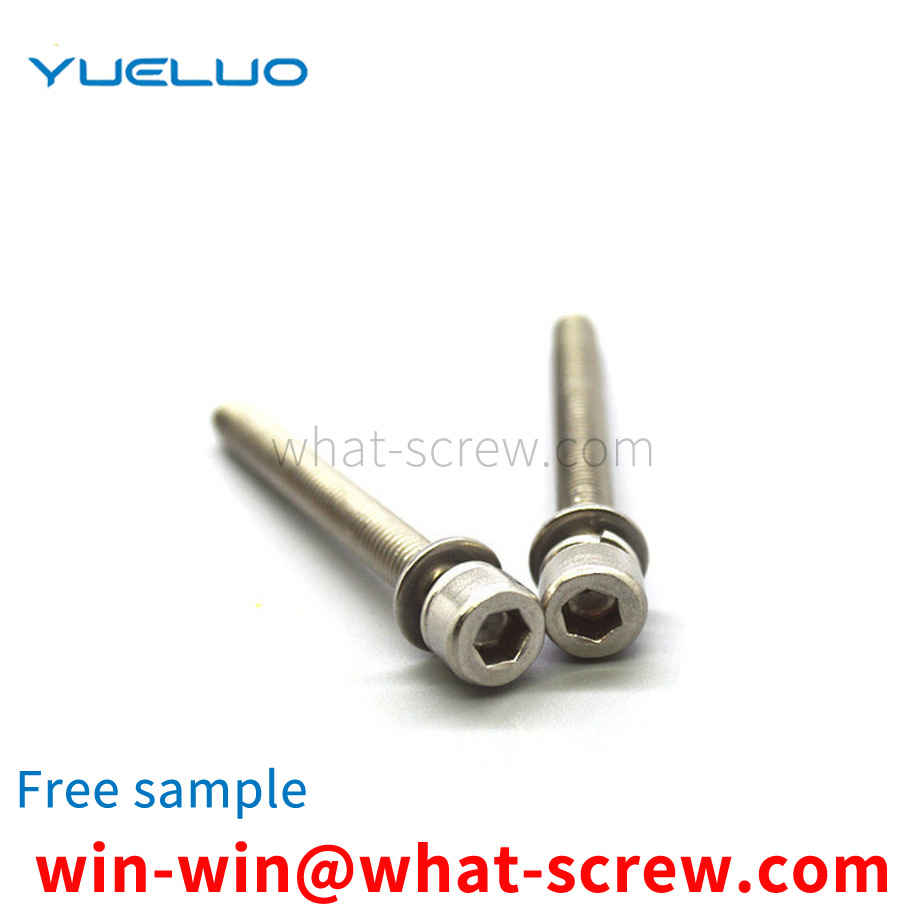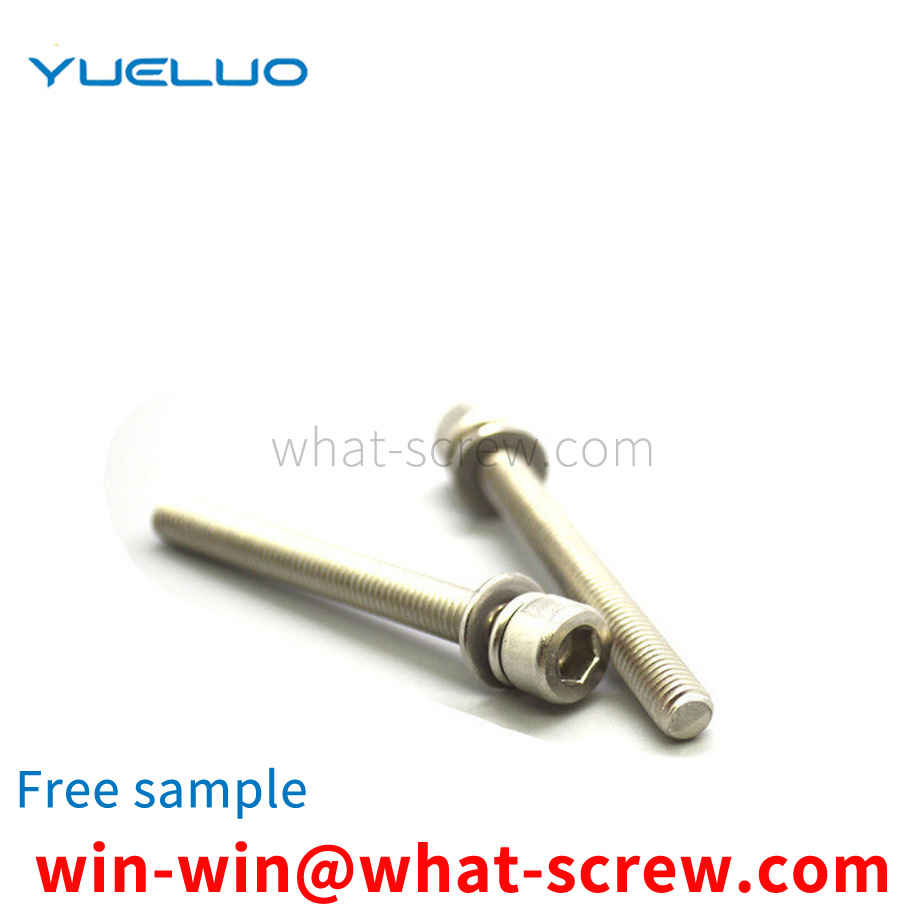Pull rivets, * marked as blind rivets, are based on the principle of Hooke's law. After the two joints are clamped with special equipment for pull rivets, the metal of the ring-shaped collar is squeezed and filled to the point where there are many rivets. In the groove of the bolt column of the annular groove, a fastening method that tightly combines the collar and the bolt column. A riveting machine is a mechanical device that uses rivets to riveted items together in batches. The riveting machine is mainly assembled by rotation and pressure. The riveting machine is mainly used in the occasions where rivet riveting is required. The common specifications and models include pneumatic, hydraulic and electric, single-head and double-head.
In actual use, the rivet rod body 3-2 is passed through the riveting plate 6 and the riveting plate 7, and the rivet dome head 3-1 is placed in the mold cavity 1-1, and the cover mold 2 is driven by the riveting machine to impact the rivet rod body 3-2. Because the center of the cover mold 2 is provided with a cavity 2-1 that matches the shape of the rivet dome 3-3, the end of the rivet rod 3-2 will form the rivet dome 3-3. However, due to the rivet When the riveting machine is impacted and vibrated, a large amount of oxide slag 4 will be generated, and the oxide slag 4 will slide down the surface of the cavity 1-1 to the bottom of the cavity 1-1 and accumulate. At this time, the temperature of the rivet is very high and the plasticity is very good. The hardness is extremely low and it is easy to form. Therefore, the accumulated oxide slag 4 squeezes the surface of the rivet dome 3-1 and the bottom surface of the cavity 1-1 to form pits, and causes wear on the bottom surface of the cavity, not only It affects the riveting quality, riveting strength and appearance quality of the rivet, and also affects the quality of the rivet die, resulting in economic losses.
Sometimes, the iron screws are often seen broken, and sometimes, the stainless steel screws are also seen broken. But generally speaking, stainless steel screws rarely break. Because the stainless steel screw wire itself is relatively hard. But under certain circumstances, stainless steel screws can still break. So what are the main reasons for stainless steel screws to break? The reasons for the fracture of stainless steel screws are as follows: 1. The quality of raw materials used for stainless steel screws is poor, and the quality of stainless steel screws is not good. There are many impurities, impure, resulting in insufficient hardness of stainless steel screws. 2. The production process of stainless steel screws. For example, stainless steel screws with eccentric head and eccentricity, and the Q value is too deep and the R position design is too small during the down punching operation during production. 3. The customer uses too much force when using stainless steel screws. Generally, you do a torque test to see how much the minimum breaking force is, and then adjust the torque. Of course, stainless steel screws must be broken for more than three reasons. But the above three reasons are the main reasons for the fracture of stainless steel screws. When the stainless steel screw is found to be broken, it can be checked step by step. Find out what's causing it.
In the automobile industry, it is often necessary to install bolts at the opening of a closed cavity to fix and connect other parts. However, the diameter of the opening of the closed cavity is often larger than that of the head of the bolt, so it is necessary to set a strip-shaped spacer on the head of the bolt, so that the spacer can penetrate the opening longitudinally, and then block the opening horizontally, so as to be stuck with an upside-down buckle. Bolt head. However, since the bolt body of the bolt has a certain length, the manual vertical and horizontal turning operation after the strip spacer penetrates the opening is very difficult, and it is easy to drop the bolt and the spacer into the airtight cavity together, which greatly increases the assembly time. Increased labor costs.
High-strength bolt connection has the advantages of simple construction, good mechanical performance, disassembly and replacement, fatigue resistance, and no loosening under dynamic load. It is a promising connection method. High-strength bolts use a special wrench to tighten the nut, so that the bolt generates a huge and controlled pre-tension. Under the action of pre-pressure, a large frictional force will be generated along the surface of the connected parts. Obviously, as long as the axial force is less than this frictional force, the components will not slip and the connection will not be damaged. This is the high-strength bolt connection. principle. High-strength bolted connections rely on the friction between the contact surfaces of the connectors to prevent them from sliding each other. In order to make the contact surfaces have sufficient friction, it is necessary to increase the clamping force of the components and increase the friction coefficient of the contact surfaces of the components. The clamping force between the components is achieved by applying pretension to the bolts, so the bolts must be made of high-strength steel, which is why it is called high-strength bolted connections. In high-strength bolted connections, the friction coefficient has a great influence on the bearing capacity. Tests show that the coefficient of friction is mainly affected by the form of the contact surface and the material of the components. In order to increase the friction coefficient of the contact surface, methods such as sandblasting and wire brush cleaning are often used to treat the contact surface of the components within the connection range during construction.
We have many years of experience in the production and sales of screws, nuts, flat washers, etc. The main products are: plum bearing washers, external serrated stop washers, 10-grade Q230 Dacromet flat bottom hexagon nuts, conversion bolts and other products, we can provide you with suitable products. Your fastener solution.



















 Service Hotline
Service Hotline




